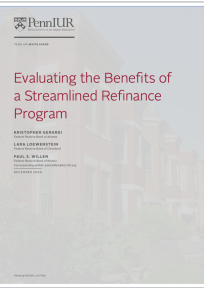Key Message
A streamlined refinance program could significantly lower mortgage payments and reduce default risk for many borrowers, providing essential financial relief during the pandemic. Such a program, designed to allow borrowers to refinance their mortgages without the usual documentation of employment or income, could lead to an average monthly payment reduction of approximately $280 for Fannie Mae/Freddie Mac borrowers and $200 for Ginnie Mae (Government National Mortgage Association (GNMA)) borrowers. This reduction in payments would substantially decrease the default risk, offering much-needed stability to households.
In addition, the inclusion of a cash-out component in the program could provide significant liquidity to borrowers. By allowing homeowners to extract equity up to a 90% loan-to-value ratio while keeping payments constant, the average Fannie Mae/Freddie Mac borrower could take out $54,000 and the average Ginnie Mae borrower could extract $35,000. However, this would come with an increased default risk.
A balanced approach that reduces payments and allows for some equity extraction without increasing default risk could offer a median payment reduction of $80 per month for Fannie Mae/Freddie Mac borrowers and $73 for Ginnie Mae borrowers, while also providing substantial cash-out amounts. This streamlined refinance program would serve as an effective alternative to mortgage forbearance, providing long-term relief and financial stability to homeowners and stimulating the economy by increasing disposable income and consumer spending.


